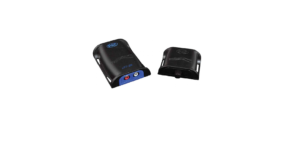PAC LP7-4 Line Output Converter User Manual

Before You Start
Replacing your radio? PAC also produces RadioPRO™ which is a radio replacement solution, with steering wheel control retention built-in. This greatly expedites the installation of a new radio into your vehicle. To see if there is a RadioPRO™ interface for your vehicle, visit www.pac-audio.com and search “Radio PRO”.
Install It Right with L.O.C. PRO™
Don’t cheat yourself out of all the performance your new radio or amplifier can deliver. Proper audio line level matching is critical when replacing your vehicle’s factory (OEM) radio or amplifier. It can be the difference between a great-sounding system that you enjoy every day and a buggy, the noisy mess that drives you crazy. PAC L.O.C.PRO™ interfaces have been professionally designed for those who want the very best
General Overview
The L.O.C.PRO™ LP7-4 can be used for either replacing an OEM radio and retaining the factory amplified system or adding amplifiers to a system that does not have RCA outputs. L.O.C.PRO™ LP7-4 will also monitor the audio input signal and automatically create an amplifier turn-on for systems that do not have one. Level matching is achieved using precision stereo gain dials and will enable proper adjustment of audio output of the radio for optimum system performance.
Differential inputs also allow for use in OEM BOSE and other premium system scenarios. Included in these instructions are the most common applications for the L.O.C.PRO™ LP7-4. For specialty applications not covered in this manual, please visit www.pac-audio.com for more comprehensive, vehicle specific wiring diagrams. Direct url – www.pac-audio.com/products/locpro
Speaker Level Input to RCA Level Output
Speaker level input to RCA level output is the most commonly used configuration for the LP7-4. Use this when you need to create RCA level outputs from a source that only has speaker level outputs. The RCA input connectors on the main harness will not be utilized for this type of installation, we suggest cutting them off the harness 3 inches from the RCA end so they can be saved and used for a future installation. After all the connections are made on the remaining wires, skip to the level adjustment section of this manual.
Cut away RCA ends for wired speaker level inputs

Speaker level input to speaker level output is most commonly used when replacing an OEM radio and retaining the factory installed amplifiers. Use this when you need to match levels from a source that only has speaker level outputs and an amplifier with speaker level inputs. The RCA input connectors on the main harness will be used for this type of installation, we suggest cutting them off the harness 3 inches from the RCA end so they can be used for wired speaker level output. After all the connections are made, skip to the level adjustment section of this manual.
Cut RCA in half from main harness. Then connect to ouputs of L.O.C to provide wired speaker lead outputs.

Level Adjustment
New School
Required items: Digital Multi-Meter, Test track media @ 1kHz and 100Hz. Max Amplifier Line-level Input Voltage Specification (i.e., 4vrms, 8vrms, etc.) Proper level adjustment is crucial for obtaining the best possible sound quality. Following the guidelines below will enable you to properly set the output gain of the LP7-4 using equipment that is readily available. Although this device can be set by ear (Old School), we recommend using a multimeter and test tracks for pinpoint accuracy and the least chance of noise. Amplifiers usually have 2, 4 or 8v max line-level input ratings but this can vary. This max line-level input will be your target setting you will read on the multi-meter. Perform the following procedure for each amplifier you are installing.
Example:
Amplifier 1 (Mid/High frequency) has a maximum 4v input voltage, so you will be targeting a 4 volt output voltage from the LP7-4. Amplifier 2 (Sub frequency) has a maximum 2v input voltage, so you will be targeting a 2 volt output voltage from the LP7-4.
- Start with gain adjustment levels on LP7-4 and amplifiers set to minimum.
- Turn source unit to ¾ maximum volume and start test track (1kHz for mid/high or full range, 100Hz for sub).
- Choose either left or right channel – With multi-meter, test output of LP7-4 front channels. Probe with negative on RCA shield and positive in center of RCA output. (figure 1)
- Slowly adjust level on LP7-4 until you reach the target voltage of the amplifier. (figure 2)
- Repeat steps for rear channels (if connecting to a different amplifier, adjust to that amplifier’s voltage requirements)
- Turn volume down and system off.
- Connect RCAs, set gains on amplifiers to minimum
- Turn system on and fine tune gains of amplifier (if needed).

Old School
- Start with gain adjustment levels on LP7-4 and amplifiers set to minimum.
- Turn source unit to ¾ maximum volume and play a familiar song that has dynamic attributes.
For example, if your volume goes to 40 you will turn it up to 30 and play a song that has some quiet sections and some really loud sections. - Slowly adjust front channel gain of LP7-4 until just a hint of distortion is audible, and then back down gain just under that threshold and the distortion goes away. (figure 2)
- Repeat steps 1-3 for rear channels.
REFERENCE LINK
https://catalog.pac-audio.com/catalog/audio-interfacing/lp7-4





 Afrikaans
Afrikaans Albanian
Albanian Amharic
Amharic Arabic
Arabic Armenian
Armenian Azerbaijani
Azerbaijani Basque
Basque Belarusian
Belarusian Bengali
Bengali Bosnian
Bosnian Bulgarian
Bulgarian Catalan
Catalan Cebuano
Cebuano Chichewa
Chichewa Chinese (Simplified)
Chinese (Simplified) Chinese (Traditional)
Chinese (Traditional) Corsican
Corsican Croatian
Croatian Czech
Czech Danish
Danish Dutch
Dutch English
English Esperanto
Esperanto Estonian
Estonian Filipino
Filipino Finnish
Finnish French
French Frisian
Frisian Galician
Galician Georgian
Georgian German
German Greek
Greek Gujarati
Gujarati Haitian Creole
Haitian Creole Hausa
Hausa Hawaiian
Hawaiian Hebrew
Hebrew Hindi
Hindi Hmong
Hmong Hungarian
Hungarian Icelandic
Icelandic Igbo
Igbo Indonesian
Indonesian Irish
Irish Italian
Italian Japanese
Japanese Javanese
Javanese Kannada
Kannada Kazakh
Kazakh Khmer
Khmer Korean
Korean Kurdish (Kurmanji)
Kurdish (Kurmanji) Kyrgyz
Kyrgyz Lao
Lao Latin
Latin Latvian
Latvian Lithuanian
Lithuanian Luxembourgish
Luxembourgish Macedonian
Macedonian Malagasy
Malagasy Malay
Malay Malayalam
Malayalam Maltese
Maltese Maori
Maori Marathi
Marathi Mongolian
Mongolian Myanmar (Burmese)
Myanmar (Burmese) Nepali
Nepali Norwegian
Norwegian Pashto
Pashto Persian
Persian Polish
Polish Portuguese
Portuguese Punjabi
Punjabi Romanian
Romanian Russian
Russian Samoan
Samoan Scottish Gaelic
Scottish Gaelic Serbian
Serbian Sesotho
Sesotho Shona
Shona Sindhi
Sindhi Sinhala
Sinhala Slovak
Slovak Slovenian
Slovenian Somali
Somali Spanish
Spanish Sundanese
Sundanese Swahili
Swahili Swedish
Swedish Tajik
Tajik Tamil
Tamil Telugu
Telugu Thai
Thai Turkish
Turkish Ukrainian
Ukrainian Urdu
Urdu Uzbek
Uzbek Vietnamese
Vietnamese Welsh
Welsh Xhosa
Xhosa Yiddish
Yiddish Yoruba
Yoruba Zulu
Zulu